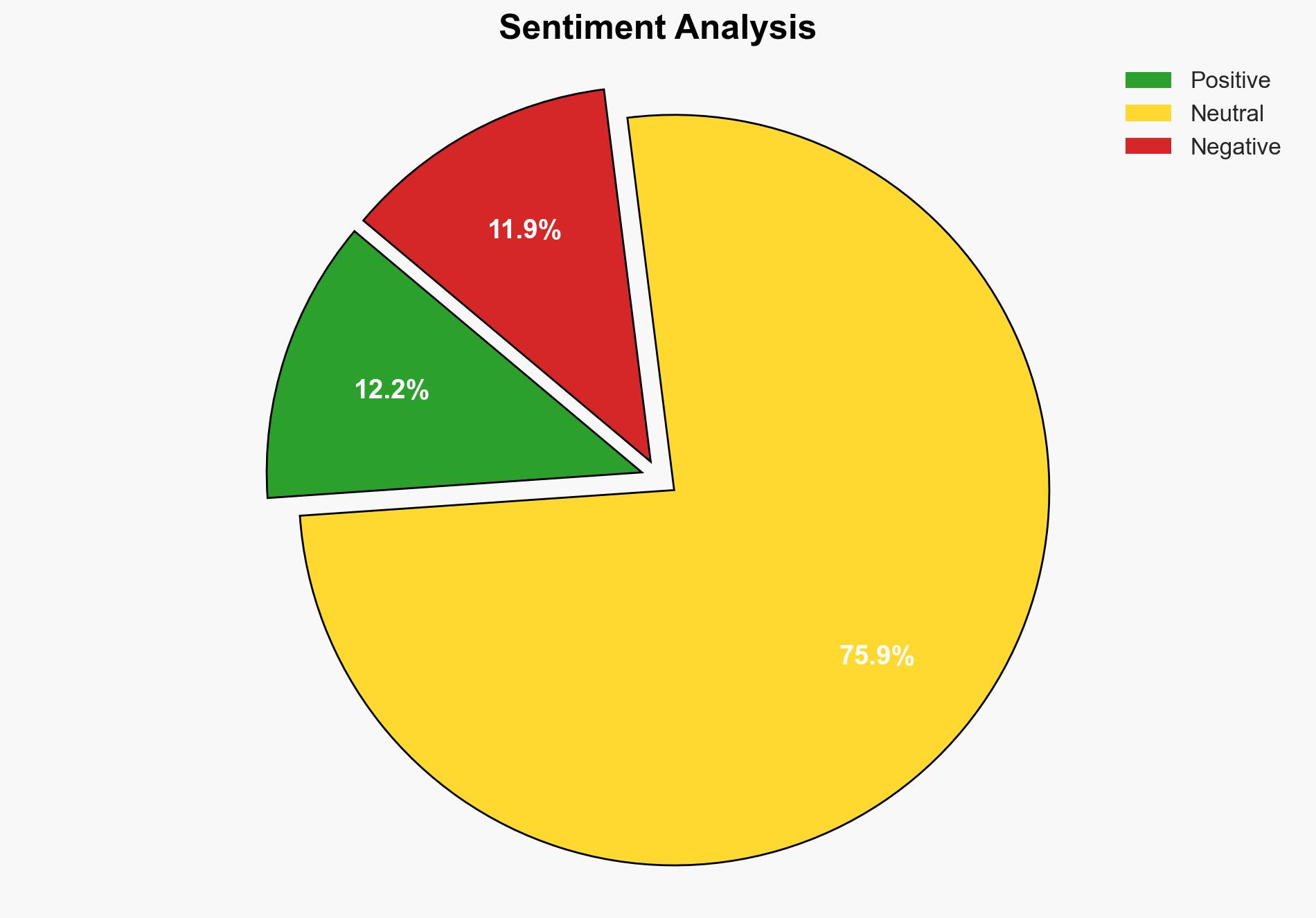USS Carl Vinson Carrier Heads to Red Sea to Confront the Houthis – The National Interest
Published on: 2025-03-24
Intelligence Report: USS Carl Vinson Carrier Heads to Red Sea to Confront the Houthis – The National Interest
1. BLUF (Bottom Line Up Front)
The USS Carl Vinson is being redirected to the Red Sea to address increased threats from the Houthis, following a surge in airstrikes and missile attacks in the region. This strategic move underscores the United States’ commitment to safeguarding international shipping routes and countering Iranian-backed threats. The deployment aims to deter further hostilities and stabilize the region, with the USS Carl Vinson joining other naval assets to enhance defense capabilities.
2. Detailed Analysis
The following structured analytic techniques have been applied for this analysis:
General Analysis
The deployment of the USS Carl Vinson to the Red Sea is a direct response to the escalating threat posed by the Houthis, who have intensified their attacks on international shipping and military vessels. The decision aligns with the strategic priority of securing critical waterways such as the Strait of Hormuz, which is vital for global oil supply. The presence of the USS Carl Vinson, alongside other naval assets, serves as a formidable deterrent against further aggression by Iranian-backed groups in the region.
3. Implications and Strategic Risks
The increased military presence in the Red Sea poses several strategic risks and implications:
- Heightened tensions between the United States and Iran, potentially leading to broader regional conflicts.
- Disruption of global oil supply routes, impacting international economic stability.
- Escalation of hostilities in Yemen, complicating peace efforts and humanitarian conditions.
4. Recommendations and Outlook
Recommendations:
- Enhance diplomatic efforts to de-escalate tensions with Iran and its proxies.
- Increase intelligence-sharing with regional allies to improve threat detection and response.
- Invest in advanced missile defense systems to protect naval and commercial vessels.
Outlook:
Best-case scenario: Successful deterrence leads to a reduction in Houthi attacks, stabilizing the region and securing shipping routes.
Worst-case scenario: Escalation of hostilities results in direct conflict between U.S. forces and Iranian-backed groups, disrupting global oil markets.
Most likely outcome: Continued naval presence deters major attacks, but sporadic skirmishes persist, requiring ongoing vigilance and strategic adjustments.
5. Key Individuals and Entities
The report mentions significant individuals and organizations, including Pete Hegseth, Donald Trump, Lloyd Austin, and the USS Carl Vinson. These entities play crucial roles in shaping the strategic and operational landscape in the region.





